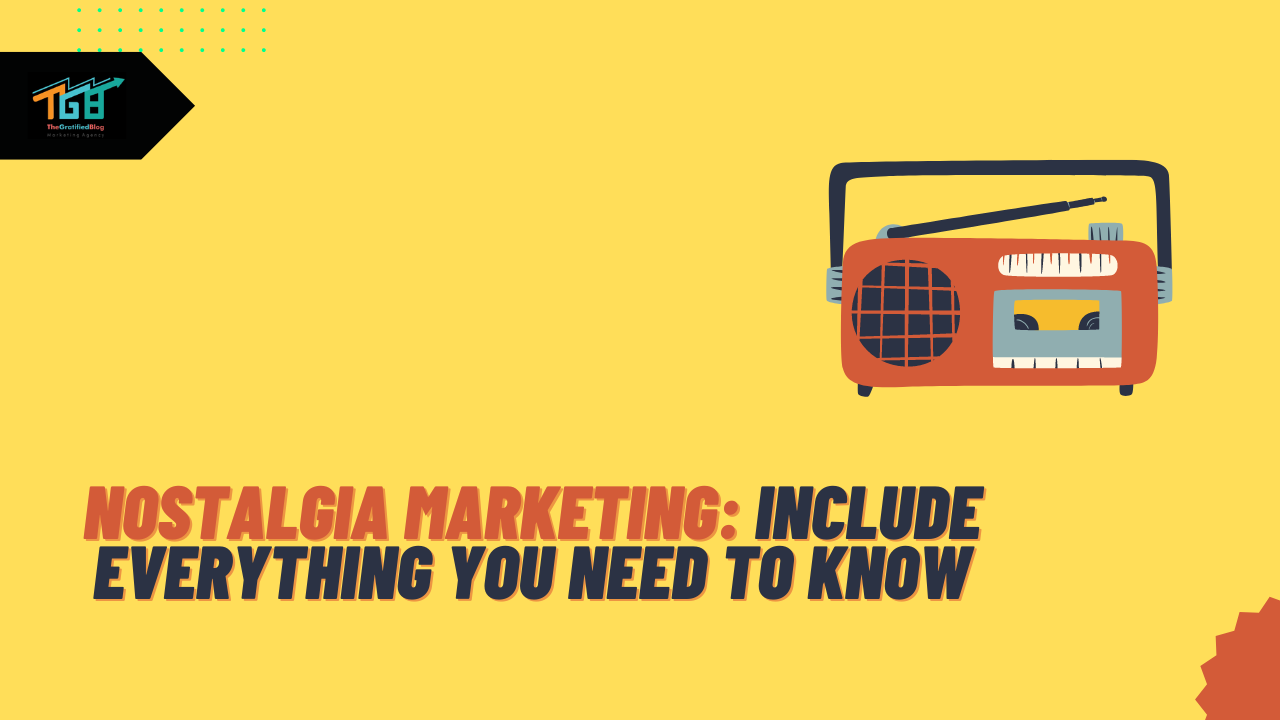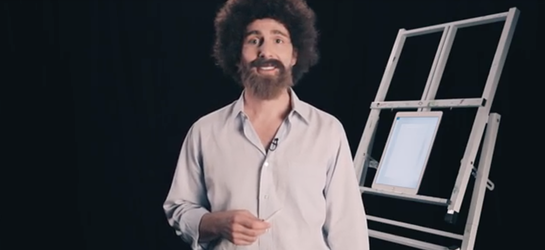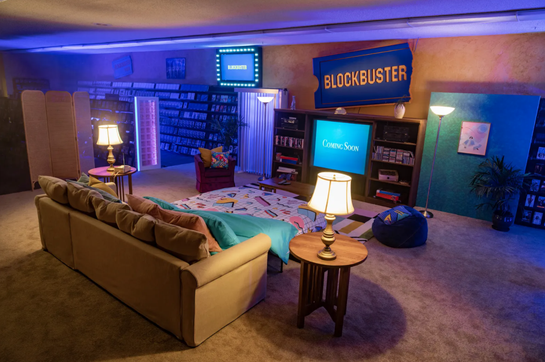
In today’s highly competitive marketing landscape, capturing and retaining consumers’ attention has become daunting for businesses. With the constant bombardment of advertisements and information overload, creating a lasting impression that resonates with customers has become increasingly challenging.
However, nostalgia marketing is a powerful tool in this digital age that can break through the noise and forge deep connections with audiences.

In this blog, we will explore nostalgia marketing in detail, its advantages, and some tips to effectively implement it in your marketing tactics.
What Is Nostalgia Marketing?
Nostalgia marketing involves leveraging positive concepts or ideas from the past to establish an emotional bond between a brand and consumers.
By evoking memories and associations related to earlier experiences, such as childhood or iconic pop culture references, brands aim to create a deep and meaningful connection that resonates with their target audience.
Additionally, a survey by scirp.org found that people enjoy nostalgic marketing, making it a particularly effective strategy for targeting this demographic.
Nostalgia Marketing Benefits
Here are some benefits of nostalgia marketing:
Serve A Sensation Of Integrity
It means creating an experience or impression that conveys customers’ honesty, trustworthiness, and authenticity. It involves aligning actions, values, and messaging consistently to build a perception of integrity and credibility.
By maintaining transparency, delivering on promises, and upholding ethical practices, businesses can cultivate a sense of trust and reliability among their audience.
This sensation of integrity fosters customer loyalty and enhances the brand’s overall reputation and long-term success.
Minimize Discomfort
To minimize discomfort is actively reducing or alleviating any feelings of unease, inconvenience, or dissatisfaction that customers may experience. It involves addressing pain points, streamlining processes, and providing a seamless and pleasant customer experience.
Businesses can create a positive and comfortable customer environment by prioritizing customer satisfaction and proactively identifying and resolving issues. This approach fosters loyalty, builds trust, and enhances the brand’s reputation.
Create Bespoke Alliances
It refers to forming unique and tailored partnerships or collaborations customized to meet specific needs and goals. Rather than relying on generic or standard alliances, businesses seek out strategic partnerships that align closely with their vision, values, and objectives.
These alliances are carefully curated to leverage complementary strengths, resources, and expertise, ultimately driving mutual benefits and creating a competitive edge. By forging bespoke partnerships, businesses can unlock new opportunities, expand their reach, and achieve shared success in a distinctive and customized manner.
Recall Pop Culture
Recalling pop culture involves tapping into well-known elements of popular culture, such as movies, music, celebrities, or iconic references, to create a connection with the target audience.
By leveraging these familiar cultural touchstones, businesses can evoke feelings of nostalgia, relatability, and shared experiences. This strategy can help capture attention, ignite conversations, and create a sense of familiarity and resonance with customers.
By incorporating pop culture references into marketing campaigns or branding efforts, businesses can enhance engagement, generate buzz, and establish a unique identity in the minds of their audience.
Some Of The Tips On How To Use Nostalgia Marketing
Here are some steps businesses can take to use nostalgia marketing effectively:
- Assess Market
Assessing the market is crucial for the successful implementation of nostalgia marketing. Thoroughly researching and analyzing your target audience allows you to identify their generational or cultural influences, enabling you to understand the specific memories and events that evoke nostalgia in them.
This knowledge is essential for crafting marketing strategies that effectively tap into their nostalgic sentiments and create meaningful connections.
Consider the following factors when deciding how to include nostalgia marketing in your campaigns or strategies:
- Age range: The current age of a target audience member can have the most considerable influence on which past events they may feel most positively towards.
- Other demographics: Other factors of your audience’s demographics, such as race or geographic area, can impact the cultural memories they cherish.
- Wants: Consider your target audience’s desires and pain areas regarding the brand and what they may feel nostalgic about.
- Characteristics: Consider your target audience’s personality qualities and behaviors and how they may affect your nostalgia marketing plan.
- Incorporate Indigenous Recollections
Organizations must identify the cultural memories that resonate with their target demographic to utilize nostalgia marketing effectively.
Businesses can tailor their nostalgic marketing efforts by understanding the historical events, concepts, and individuals that hold significance for their audience.
Businesses can evoke positive emotions and create a solid emotional connection with their customers by focusing on events from their target audience’s past, particularly during their formative years.
For example, a target audience of prospective consumers in their twenties may have the strongest pleasant associations with events roughly 10 or 15 years ago when they were youngsters.
In contrast, if your target audience comprises people in their 60s and 70s, you may want to relate to events that occurred more recently to evoke nostalgia in these potential customers.
- Add A Fresh & Familiar Concept
When employing this marketing technique, businesses have the opportunity to offer customers something both new and familiar. Finding a balance between the old and the modern is crucial in your marketing strategy.
Incorporating contemporary references, such as recent sports events or popular TV shows, into a nostalgia-driven campaign can reintroduce familiar products or services.
By blending current trends with nostalgic elements, businesses can create topical marketing plans that evoke a sense of nostalgia, engaging customers on multiple levels.
- Avoid Pestering
In nostalgia marketing, authenticity is paramount when delving into people’s emotions and memories. It is crucial to avoid being pushy or using nostalgia in a manner that appears forced or insincere.
Instead, focus on establishing an authentic connection with your audience by understanding what aspects of the past resonate with them and integrating those elements thoughtfully into your marketing strategy.
By approaching this technique with genuine intentions, businesses can foster deeper connections and build trust with their audience.
- Deploy Social Media
Incorporating social media into your marketing strategy is essential when implementing this technique. While various communication channels like emails and blogs are often utilized in nostalgia-driven initiatives, social media has emerged as a vital platform for such campaigns.
When exposed to nostalgia marketing efforts, people often desire to share their joyful sentiments and memories. By leveraging social media, businesses can tap into this inclination and encourage users to engage, share, and reminisce, amplifying the reach and impact of their nostalgia-driven initiatives.
Here are a few ideas for adding social media to your nostalgia marketing campaign:
- Create a hashtag: Creating a hashtag and using Hashtag Marketing Effectively can assist brand representatives and audience members in identifying and interacting with campaign-related content.
- Make a limited-time offer: Connect a promotional offer, such as a discount or a limited-time offer, to your nostalgic marketing campaign. It can inspire consumers to share your content more broadly, increasing sales.
- Make one-of-a-kind, shareable content: “electronic commerce” refers to selling electronic goods. Depending on the material the site supports, you might post a short video on one social network page and an interactive quiz on another.
Examples Of Nostalgia Marketing Campaigns
Here are some examples of nostalgia marketing campaigns:
Bacardi
For their 150th anniversary in 2012, Bacardi transported customers back in time with a campaign reminiscent of late-’50s gatherings. The ad finishes with “Starting parties for 150 years,” underlining Bacardi’s position as the must-have party fixture for over a century.
Adobe
There’s a reason Bob Ross’s PBS show, The Joy of Painting, was so popular with viewers: he demonstrated to the world that anyone, regardless of skill level, could find joy in painting.
That’s why Adobe considered Ross while developing a tutorial for Adobe Photoshop Sketch, a free mobile software that enables artists of all types to produce expressive works of art.
They effectively blended old and new, but the message stays the same: Everyone can make beautiful art.

Airbnb
During a period of slow commerce, Airbnb could reap all of the press.
When Bend, Oregon’s final Blockbuster, joined with Airbnb to deliver a memorable 90s overnight experience, it killed two birds with one stone:
Sandi Harding, the manager of Blockbuster, demonstrated gratitude to the locals by providing a source of escape throughout the pandemic.

Conclusion
I hope you understand why nostalgia marketing is essential and how to use it effectively. Whether you are a small business owner or a large corporation, these tips can help you capitalize on the power of nostalgia and deepen the bond between your brand and your customers.
If you have any doubts about the topic or want to learn more, feel free to get in touch. We will be happy to help you.
Thanks for reading 🙂








No Comments